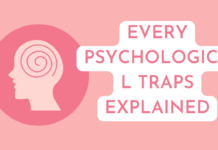Pronunciation refers to the way in which a word or language is spoken, including the sounds, stress, and intonation patterns. Good pronunciation can help make communication more effective and can also help you sound more fluent and natural when speaking a language. It is an important aspect of language learning and can take time and practice to improve.
Definition of Good Pronunciation
Good pronunciation refers to the ability to articulate sounds, stress syllables and words, and use appropriate intonation patterns in a way that is clear, understandable, and natural to native speakers of the language. In other words, good pronunciation involves speaking a language in a way that is easily understood by others, while also sounding fluent and natural.
It is important to note that there is no one “correct” or “perfect” way to pronounce a language, as there can be regional and cultural variations in pronunciation. However, having good pronunciation generally involves following the standard pronunciation norms and patterns of the language, and being able to communicate effectively with others. Good pronunciation can make a big difference in how well you are understood and how confident you feel when speaking a language.
Homophones are words that sound the same but have different meanings and spellings. Here are some examples of homophones in English:
- accept / except
- affect / effect
- aloud / allowed
- bare / bear
- brake / break
- buy / by / bye
- cell / sell
- cent / scent / sent
- die / dye
- fair / fare
- hear / here
- knight / night
- know / no
- meet / meat
- peace / piece
- plain / plane
- right / write / rite
- see / sea
- their / there / they’re
- to / too / two
- waist / waste
It’s important to pay attention to homophones when writing and speaking, as using the wrong word can change the meaning of a sentence or make it difficult to understand.
Linking in English
Linking is an important aspect of English pronunciation that involves connecting words together when speaking to create a smooth and natural flow of speech. Here are some examples of linking in English:
Consonant to vowel linking: This occurs when a word that ends with a consonant is followed by a word that begins with a vowel. In this case, the final consonant sound is linked to the initial vowel sound of the following word. For example, “he is” is pronounced as “heez” and “big apple” is pronounced as “bigapple”.
Consonant to consonant linking: When a word ends with a consonant sound and is followed by a word that begins with the same consonant sound, the two sounds are linked together. For example, “red door” is pronounced as “reddoor”.
Vowel to vowel linking: When two words are pronounced together and both end and begin with a vowel sound, they are linked together to create a smooth flow of speech. For example, “law and order” is pronounced as “law-n-order”.
Intrusive R: In some cases, an “r” sound is added between two vowels to make the pronunciation easier. For example, “India and Pakistan” is pronounced as “Indi(r)and Pakistan”.
Liaison: This occurs when the final consonant sound of one word and the initial vowel sound of the following word are not normally pronounced separately. For example, “tennis player” is pronounced as “tennis-pleyer” and “good idea” is pronounced as “good-i-dea”.
By using linking, you can make your spoken English sound more natural and fluent. However, it’s important to practice these linking techniques to avoid sounding choppy or unclear.
Difference between Vowels and Consonents
Understanding the difference between vowels and consonants is important when it comes to linking in English. Vowels are sounds that are produced with an open vocal tract and no restriction of the airflow, while consonants are sounds that are produced with some kind of obstruction of the airflow.
When linking in English, it’s often easier to link a consonant to a vowel sound than it is to link two consonants together. For example, “red apple” would be pronounced with a clear break between “red” and “apple” because they both end with a consonant sound. However, “red umbrella” could be pronounced with a linking sound between “red” and “umbrella” because “red” ends with a consonant sound and “umbrella” begins with a vowel sound.
Here are some tips for understanding vowels and consonants for linking in English:
- Vowels are usually easier to link with other sounds than consonants.
- Some consonants are easier to link than others. For example, “n” and “m” are usually easy to link with other sounds.
- The final consonant sound in a word is often linked to the beginning vowel sound of the following word.
- In some cases, an extra sound such as “r” is inserted between words to make them easier to link.
- Liaison occurs when the final consonant sound of one word and the initial vowel sound of the following word are not normally pronounced separately.
By paying attention to the sounds of the words and practicing linking techniques, you can improve your spoken English and sound more natural and fluent.









